SoundWear
Research
ACM DIS 2020 [Go to Pulication URL]
🏆 Awarded Honorable Mention Award (Top 5%)
📝 Part of Doctoral Thesis ‘Digitally Augmented Play’
#Physical Computing #3D Prototyping #Interactive Play Design #Children #Quantitative & Qualitative User Research
![]()
Previously, a large part of children’s open-ended play used to take place outdoors. In recent years, however, there has been growing concern that children spend most of their playing time watching TV, playing computer games, and using mobile phones (i.e., only indoors). The lack of outdoor play may deprive children of irreplaceable benefits such as physical activity, social skills, and a social life.
Among the feedback modalities for play and playful interaction, sound can activate physical movement, make players aware of and interact with others, and facilitate pretense-related thoughts depending on its type. This study aims to clarify the effect of non-speech sound augmentation (i.e., everyday and instrumental sounds) on outdoor play for children, where has been lacking in empirical examination.
I designed SoundWear, which is a wearable device that can be worn on the wrist and allows each child to play with sounds, and a table with SoundPalette to serve as a hub of augmented play.
![]()
![]()
![]()
![]() Four phases of the SoundWear user scenario:
Four phases of the SoundWear user scenario:
exploration, selection, sonification, and transmission
Research
ACM DIS 2020 [Go to Pulication URL]
🏆 Awarded Honorable Mention Award (Top 5%)
📝 Part of Doctoral Thesis ‘Digitally Augmented Play’
#Physical Computing #3D Prototyping #Interactive Play Design #Children #Quantitative & Qualitative User Research
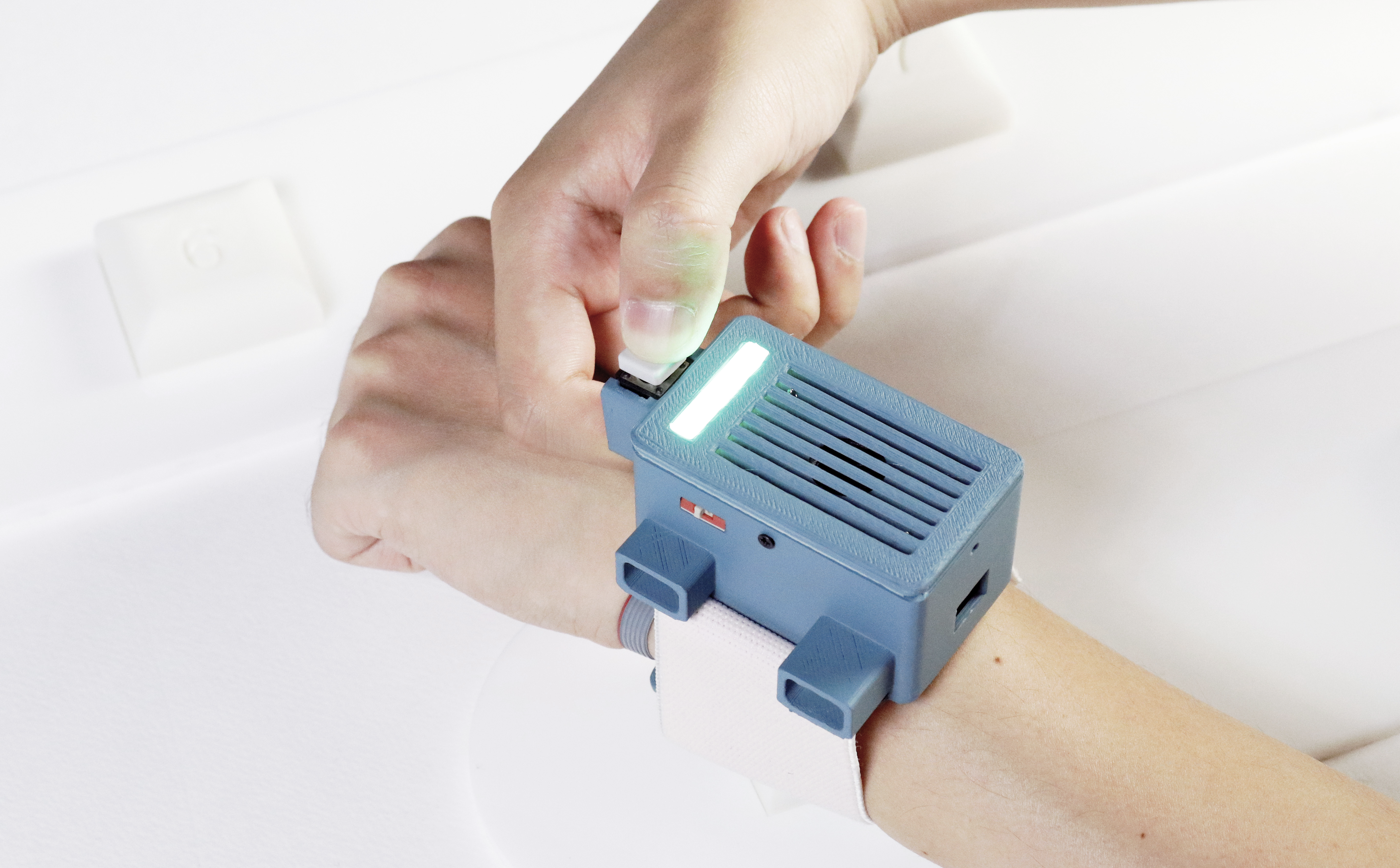
Previously, a large part of children’s open-ended play used to take place outdoors. In recent years, however, there has been growing concern that children spend most of their playing time watching TV, playing computer games, and using mobile phones (i.e., only indoors). The lack of outdoor play may deprive children of irreplaceable benefits such as physical activity, social skills, and a social life.
Among the feedback modalities for play and playful interaction, sound can activate physical movement, make players aware of and interact with others, and facilitate pretense-related thoughts depending on its type. This study aims to clarify the effect of non-speech sound augmentation (i.e., everyday and instrumental sounds) on outdoor play for children, where has been lacking in empirical examination.
I designed SoundWear, which is a wearable device that can be worn on the wrist and allows each child to play with sounds, and a table with SoundPalette to serve as a hub of augmented play.
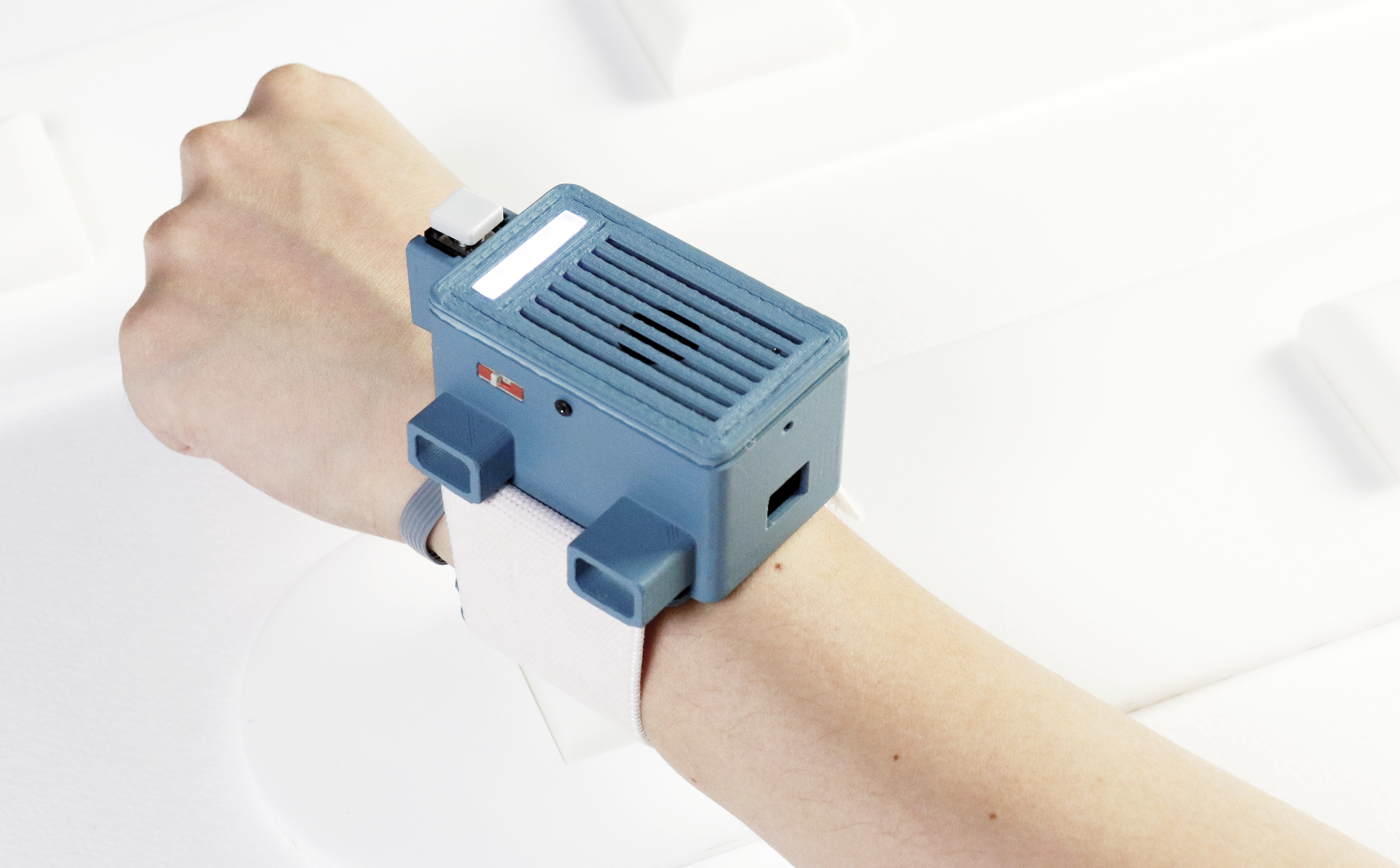

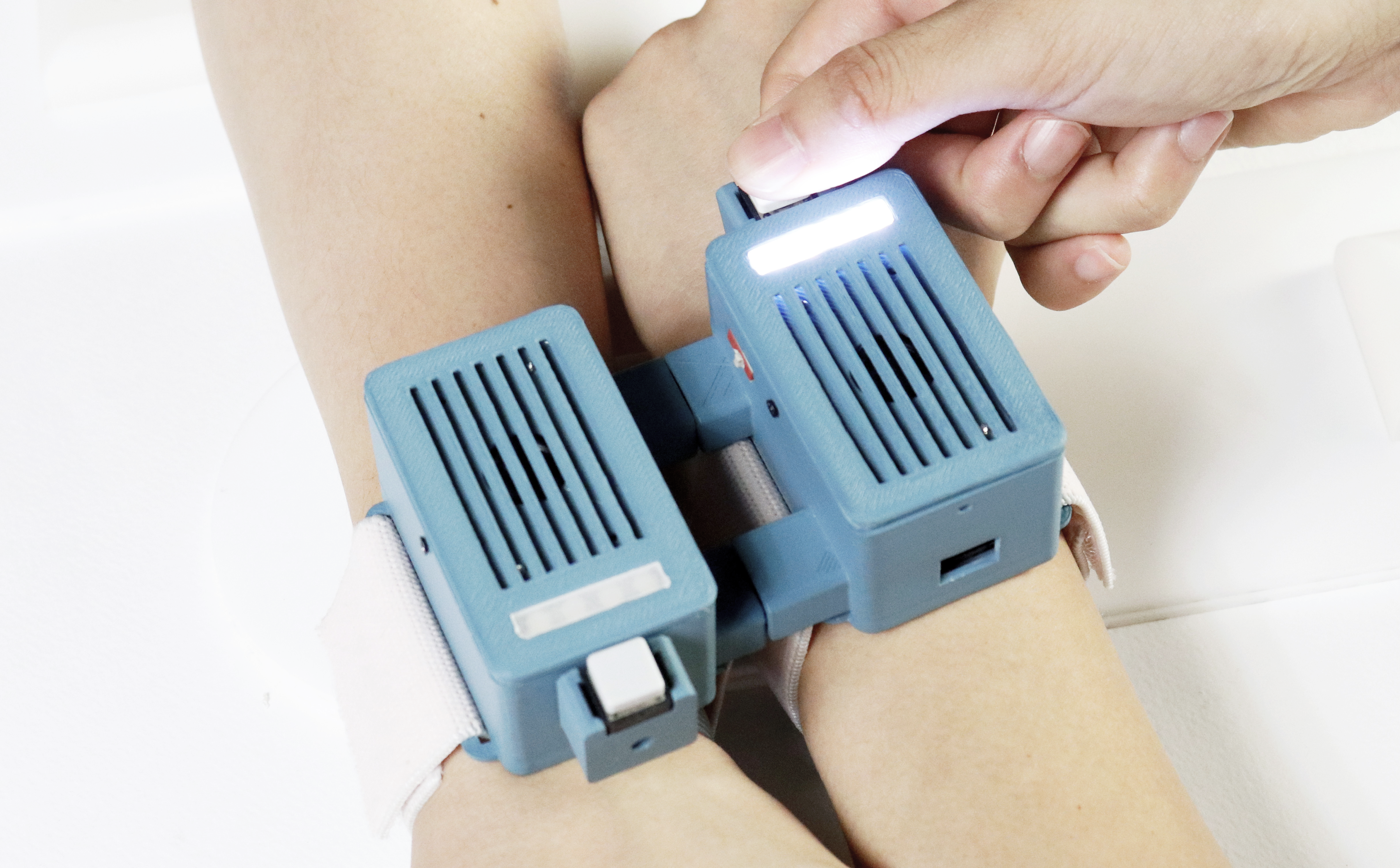
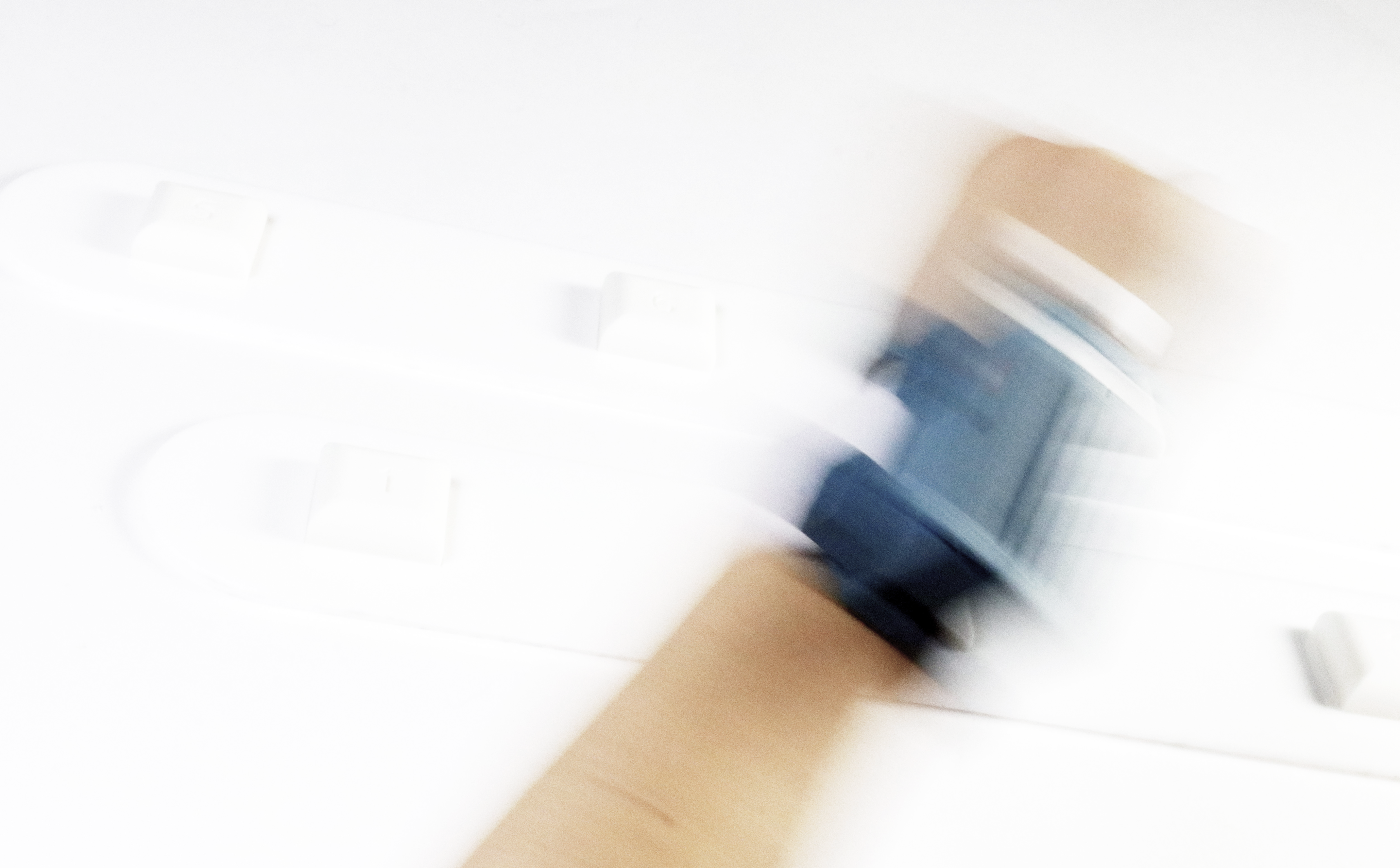
exploration, selection, sonification, and transmission
To consider the influence of sound interpretation, I prepared two SoundPalettes with different types of sounds and configured three different experimental conditions:
In a within-subject observational study, sixteen children (ages 10–11) were divided into four equally sized groups and equipped with SoundWear.
- No sound (baseline),
- Everyday sounds
- Instrumental sounds
In a within-subject observational study, sixteen children (ages 10–11) were divided into four equally sized groups and equipped with SoundWear.
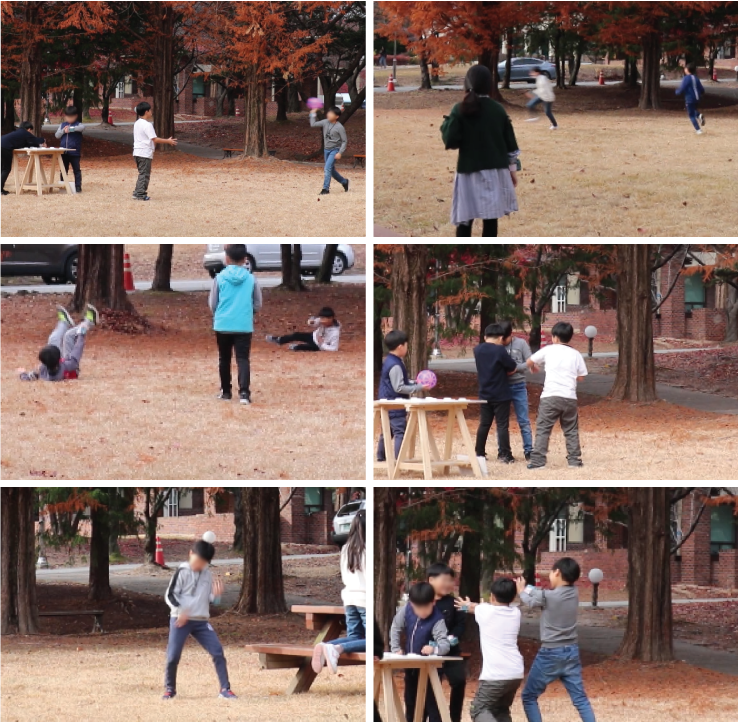
(top left) The props were used as objects related to the imagination or with imaginary attributes.
(top right) One observed strategy for social play was making no sound. To do so, children did not move at all or moved very carefully and slowly.(middle right) Children expressed ownership when using the sound transfer function as if they were giving and receiving their own items. Interestingly, during tag play, P14 and P16 referred to such a transfer as dealing music. (bottom left) Instrumental sounds were associated with something specific, such as animated films related to a sound effect or song.



Both the quantitative (ANOVA) and qualitative (thematic analysis) results revealed that augmenting everyday sounds led to distinct play types with differences in physical, social, and imaginative behaviors, whereas instrumental sounds were naturally integrated into traditional games.
Thus, sound augmentation with specific digital design features is significant for shaping distinctions in digitally enhanced play and requires considerable design attention:
- Transparent technology to provide new perspectives
- Margin for interpretation
- Ownership through a sense of achievement
I believe that this study can contribute to the discussion on open-ended play with HCI and the use of sound augmentation and wearable accessories to enrich playful experiences.